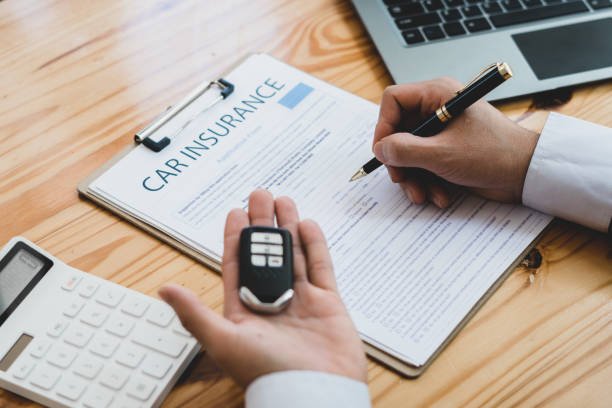Shopping for car insurance can seem daunting, but following these tips will help you get the best coverage at the lowest price.
Compare Rates from Multiple Insurers
- Get quotes from at least 3-5 different insurance companies. Rates can vary widely, so checking several options ensures you don’t overpay.
- Look at both national carriers (Geico, Progressive, etc.) and local/regional insurers. Local companies may offer lower rates.
- Compare the same coverage levels when getting quotes. This ensures an apples-to-apples rate comparison.
- Use online quote tools to quickly gather multiple quotes side-by-side.
Getting multiple quotes takes a bit of time upfront, but can save hundreds of dollars per year.**
Review the Coverage Options
- Understand the different types of car insurance coverage available. Consider which ones you need.
Liability Insurance
Covers damage/injury you cause to others. Required in most states.
Collision and Comprehensive Coverage
- Collision covers damage to your car from an accident.
- Comprehensive covers damage from theft, vandalism, weather, etc.
Uninsured/Underinsured Motorist Coverage
Pays for injuries to you and your passengers caused by an uninsured or underinsured driver.
Personal Injury Protection
Covers medical expenses for you and your passengers, regardless of who was at fault.
Choosing appropriate coverage levels protects you financially while keeping premiums affordable.
Consider Usage and Driving History
Insurers evaluate these factors when pricing your policy:
- Annual mileage – lower mileage = lower rates
- Where you live – urban areas cost more than rural
- Driving record – clean records get better pricing
- Credit history – those with good credit save more
- Vehicle use – commuting, leisure, business, etc.
- Safety features – airbags, anti-lock brakes, alarm system
Providing accurate info for these factors will help ensure you get properly risk-classified for the best rate possible.
Select Appropriate Deductibles
- The deductible is what you pay out-of-pocket before insurance kicks in.
- Higher deductibles equal lower premiums. But don’t choose an amount you can’t afford.
- Common deductibles are $250, $500 and $1,000. Pick the highest you’re comfortable with.
Choosing a higher, but manageable deductible saves money long-term by keeping premiums low.**
Seek Out Discounts
- Many insurers offer discounts that can significantly reduce your premium:
- Multi-policy – bundle home and auto insurance with one company
- Multi-car – insure two or more cars on the same policy
- Good driver – 3+ years with clean driving record
- Good student – teen drivers with 3.0+ GPA can save up to 25%
- Defensive driver – taking an approved safety course gets a discount
- Anti-theft – cars with anti-theft devices can save up to 15%
Inquiring about discounts can potentially save you hundreds per year.Make sure to ask!
Maintain Good Credit
- Insurers view drivers with poor credit as riskier and charge higher rates.
- Pay bills on time, reduce debt and limit credit inquiries to boost your credit score.
- Check your credit report annually for errors that could be lowering your score.
- If you have poor credit, consider taking defensive driving to offset the increase.
Monitoring and improving your credit over time will likely result in lower premiums.
Review Policy Annually
- Rates, coverage needs and life circumstances change over time.
- Shop around for better pricing once a year before your policy renews.
- Adjust coverage and deductibles as necessary when life events occur.
- Update vehicles, drivers, addresses, etc. with your insurer.
An annual policy review ensures you have the best value and protection.
Compare Online vs Independent Agent
- Online insurers typically offer the lowest rates, with quotes available 24/7.
- Independent agents provide personalized service and advice.
- Weigh pricing vs. individual service when choosing how to purchase.
For the easiest rate comparisons, get quotes from online providers. For a more personal buying experience, use an independent local agent.
Understand the Policy Documents
- Review the policy Declarations page and coverage forms for details on what is/isn’t covered.
- Contact your insurer or agent to clarify any unclear or confusing policy language.
- Understand exclusions that may limit certain coverages.
Reading the fine print prevents surprises later if you need to file a claim.
How to shop for car insurance
When it’s time to get car insurance, be sure to shop around and compare quotes from several providers. Look at different coverage levels and options to find the best fit for your needs and budget. Ask about discounts you may qualify for to potentially lower your premium. Providing accurate details about your driving history and vehicle use will help ensure the most accurate rate. Review your policy documents closely so you understand what is covered before purchasing. Taking the time upfront to find the right policy at the right price will give you peace of mind on the road for the year ahead.
Frequently Asked Questions about Shopping for Car Insurance
What is the minimum car insurance coverage required?
The minimum coverage legally required varies by state. Most states require liability insurance (to cover damage/injury you cause others) with limits of:
- $25,000 bodily injury per person
- $50,000 bodily injury per accident
- $25,000 property damage per accident
However, experts recommend also purchasing collision, comprehensive and uninsured motorist coverage for better protection.
How much car insurance do I need?
Purchase as much coverage as you can reasonably afford and that protects your financial assets. Common recommendations include:
- $100,000-$300,000 bodily injury liability per person
- $300,000-$500,000 bodily injury liability per accident
- $50,000-$100,000 property damage liability
- $500-$1,000 deductibles
- Collision and comprehensive coverage
Your specific needs depend on your car value, assets and risk tolerance.
How can I save money on my car insurance premium?
Tips to reduce your premium include:
- Comparison shop policies from multiple insurers
- Take advantage of discounts you qualify for
- Choose a higher deductible like $500 or $1,000
- Ask about pay-per-mile insurance
- Limit your mileage or car usage
- Maintain excellent credit
- Drive safely and avoid accidents, tickets, etc.
What factors determine my car insurance rate?
Insurers look at these main factors when pricing your policy:
- Driving record – tickets, accidents, etc.
- Location – higher premiums in urban areas
- Annual mileage – higher mileage means higher rates
- Credit score – good credit means lower premiums
- Vehicle type – makes/models more likely to file claims have higher premiums
- Age and gender – young drivers and males often pay more
When should I buy car insurance?
It’s ideal to purchase car insurance before your current policy expires to avoid any lapse in coverage. Allow 1-2 weeks to compare multiple quotes and make a decision. If buying a new car, add it to your policy as soon as you finalize the purchase.
How do I cancel my car insurance?
Contact your insurance provider via phone, email or written letter. Let them know the date you want to cancel coverage. Per state laws, companies must refund any unused premium within a certain timeframe after cancellation. Removing a car or driver from the policy also requires contacting your insurer to update the policy.
Final Thoughts
Shopping for car insurance requires some time and effort upfront to properly compare policies and pricing. But taking the right steps ensures you secure affordable, quality coverage that provides peace of mind. Leveraging all available discounts provides significant savings opportunities. Monitoring credit, driving safely, and reviewing the policy annually helps keep premiums in check. With the right insurer, coverage and premium, you can be confident you have the protection you need on the road ahead.










